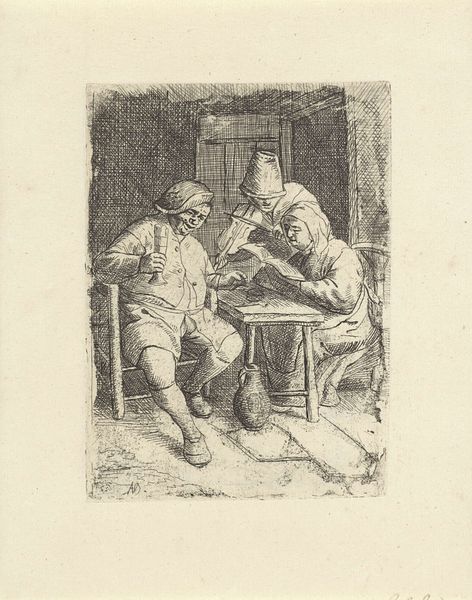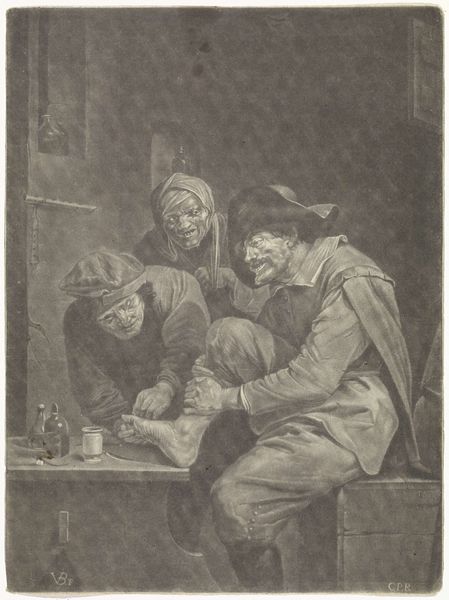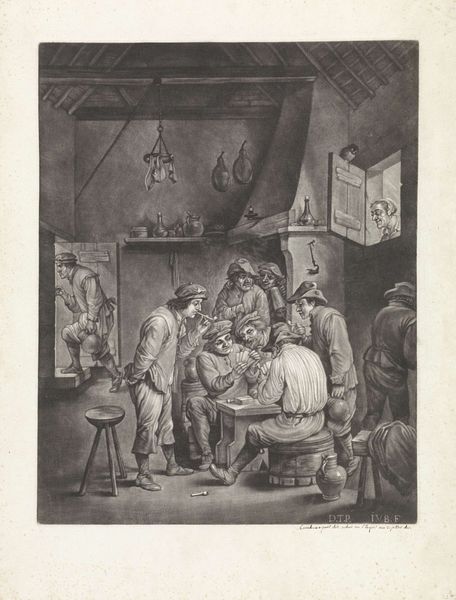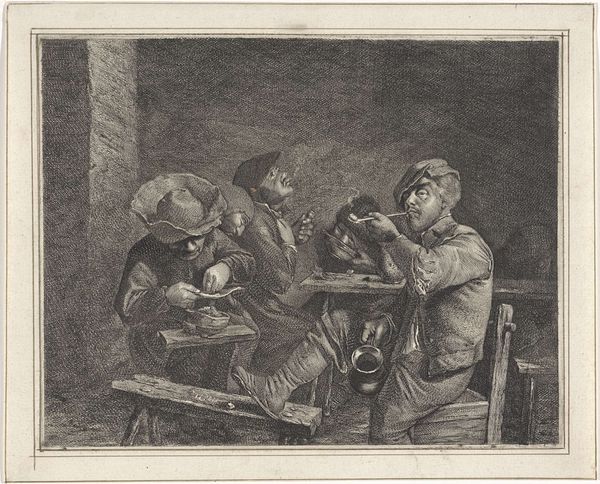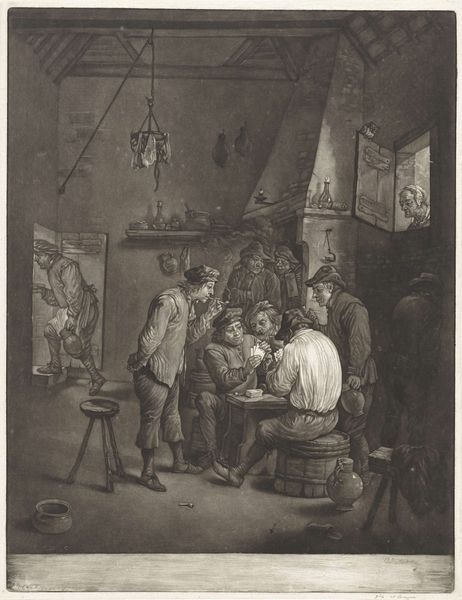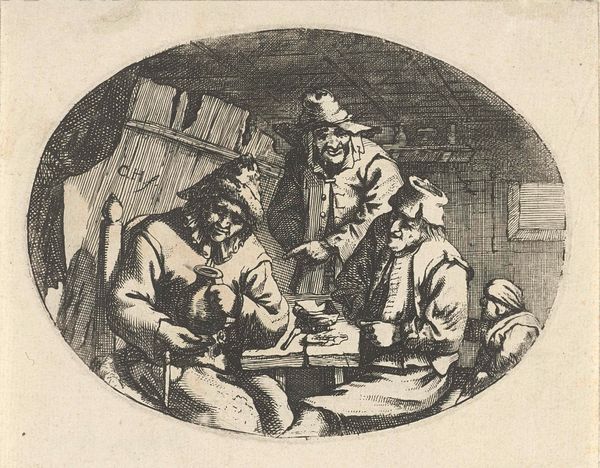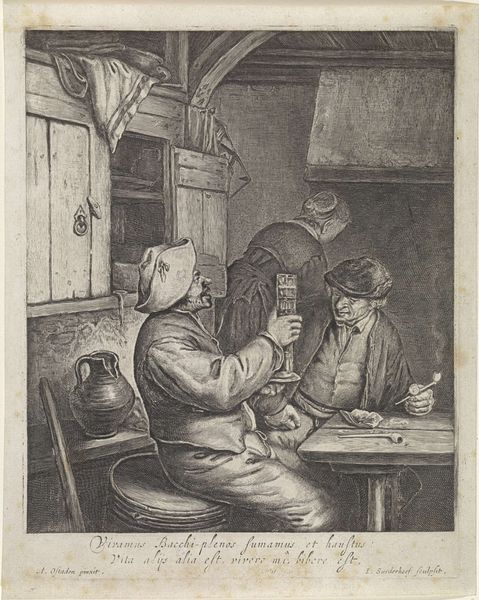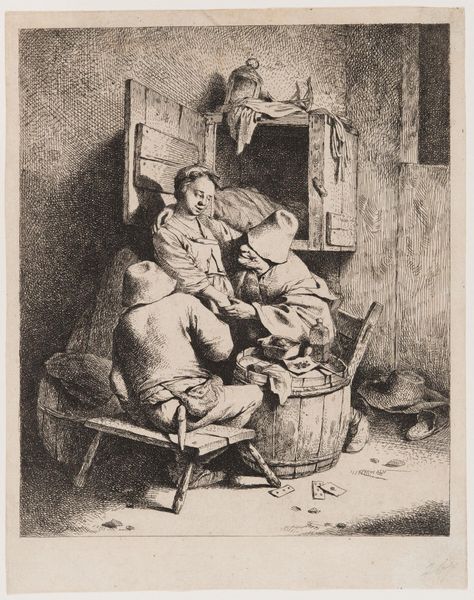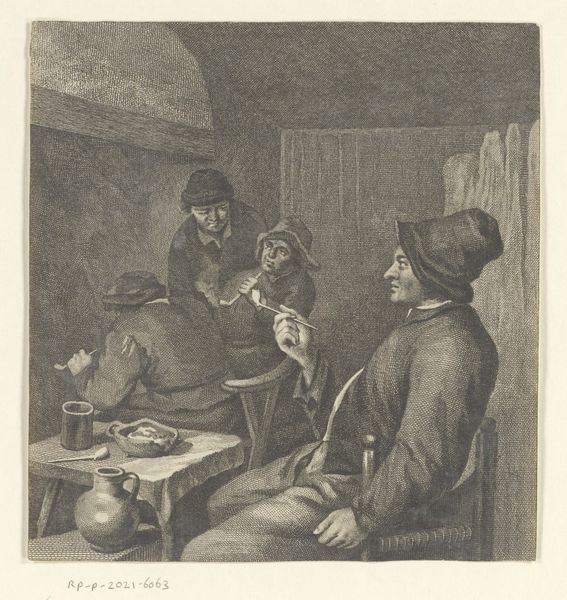
drawing, etching, ink
#
drawing
#
baroque
#
dutch-golden-age
#
etching
#
figuration
#
ink
#
group-portraits
#
genre-painting
#
graphite
Dimensions: height 294 mm, width 219 mm
Copyright: Rijks Museum: Open Domain
Editor: So, this is "Rokende en drinkende mannen" by Jan van der Bruggen, created around 1685 to 1690. It's an etching, and it depicts a few men gathered, smoking and drinking. There's a certain candidness to it that I find fascinating; it feels like we're peering into a very ordinary, intimate moment. What's your read on this work, especially in the context of its time? Curator: It's a glimpse into Dutch Golden Age society. Works like this, and genre paintings in particular, rose to prominence during this period, driven by an expanding middle class that could now afford art. This etching, being more easily reproducible, likely circulated even more widely. Consider what that imagery is projecting. It’s not depicting religious figures or aristocracy, but everyday people engaging in common activities. What does that shift signal, do you think? Editor: That this was the life of everyday people in a Golden age? A shift in cultural values? Like, an increased importance placed on common people and their pastimes? Curator: Precisely. We also have to think about the rise of print culture. An etching is not only art, it's also a commodity; a shareable image, a political statement that would resonate with many. Van der Bruggen is capitalizing on the trend for realistic depictions of everyday life and the growing market that embraced it. It suggests something about a new concept: 'public opinion.' Are there any aspects of its composition that draw your attention? Editor: The different viewpoints - you get the sense that someone is watching these guys from an exterior point of view... There's the shadowy guy looking on and you wonder, why these choices? Curator: Good observation. Do you think that inclusion influences the viewer and the piece's historical and social contexts? Editor: It definitely seems like it invites commentary. Thanks, this piece became a lot more interesting for me! Curator: The pleasure was all mine. Considering how these images might have shaped perceptions of ordinary life – then and now – is crucial.
Comments
No comments
Be the first to comment and join the conversation on the ultimate creative platform.



